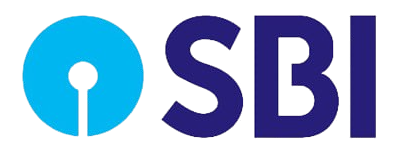Banks are the cornerstone of the economy of any country. Their functioning highly effects the countrys’ financial structure. Whenever the economy blooms, the lending and borrowing in the banks also blooms and this, as a result leads to healthy growth in banking sector. However, when the progress gets disturbed, default cases rises up, and as a result bad assets i.e., number of bad loans increases.
Thus, functioning and growth in banks is a key deciding factor of an economy.
Last year, honourable Prime Minister Narendra Modi announced economic target of USD 5Tn for India Inc. which is to be achieved in the next 5 years. However, considering the global pandemic that resulted in an extended lockdown period, and hence slowed down the economy.
So modified new plans must be prepared to achieve the target in the pre-fixed time. To achieve this, credit from banks must grow approximately 12% per year in order to atleast aim for a USD 5 Trillion economy figure by 2025. And these banking players have always remained resilient, growing consistently through multiple economic cycles in order to capitalize on every opportunity.
Types of Bank Stocks in India
There are three types of bank stocks in India:
Public Sector Banks: These are government-owned banks that account for a significant portion of the Indian banking sector. Examples include State Bank of India (SBI), Punjab National Bank (PNB), and Bank of Baroda.
Private Sector Banks: These are owned and operated by private entities. Examples include HDFC Bank, ICICI Bank, and Kotak Mahindra Bank.
Small Finance Banks: These are relatively new banks that focus on providing financial services to underserved segments of the population. Examples include AU Small Finance Bank and Ujjivan Small Finance Bank.
List of Top Banking Stocks in India:-
| 1. | State Bank of India |
| 2. | ICICI Bank |
| 3. | AU Small Finance Bank |
| 4. | HDFC Bank |
| 5. | Kotak Mahindra Bank |
| 6. | Axis Bank |
So, here in this article we will show you a list of best banking stocks :
1. State Bank of India:
The State Bank of India is an Indian Multinational, public sector banking and financial services body. It is the largest Indian commercial bank with a rich legacy of over 200 years.

State Bank of India (SBI) is a multinational public sector bank. It was started on 1 July 1955 and is headquartered in Mumbai, Maharashtra. It is one of the most renowned banks in India, operating over 22,000 Branches in India and approximately 229 Branches in 31 countries internationally.
It offers a wide range of products and services, such as savings accounts, fixed deposits, personal loans, home loans, business loans, debit cards, credit cards, and many more. With its multiple products, the bank has been catering to almost every banking need of customers.
2. ICICI Bank:
ICICI Bank is noted for its personal, business, and Non-Resident Indians (NRI) banking. The bank has a chain of over 6,000 branches and over 17,000 ATMs across India. It has a global presence in 17 countries.

ICICI Bank is another topmost private sector bank with consolidated total asset of INR 23.6 lakh crore. The bank was formed in 1994 and now it has its presence even in Bahrain, Dubai, Singapore apart from all the states of India.
It offers diverse banking products and financial services to corporates, retail customers and small businesses through its different group companies.
Some notable customer-centric digital banking solutions include Unified Payments Interface (UPI), WhatsApp Banking, iWish, Pockets, Pay Later, and more.
| LATEST IPO GMP | UPCOMING IPO 2025 |
3. AU Small Finance Bank:
AU Small Finance Bank Ltd is a leading Indian banking and financial services company founded in 1996. The company is headquartered in Jaipur, Rajasthan, and is a subsidiary of AU Financiers (India) Ltd.

AU Small Finance Bank was established as a commercial bank in 2017, though it started as a non-bank lender in 1996. AU is India’s largest SFB and focuses on retail customers and small and medium enterprises. It operates from 1,049 banking touchpoints across 21 states and three Union Territories. As on 31 December 2023, the bank had a net worth of Rs 12,167 crore, deposit base of Rs 80,120 crore and a balance sheet size of Rs 1,01,176 crore.
The bank provides a wide range of financial services and products, including retail banking, corporate banking, investment banking, wealth management, insurance, and other financial services. AU Small Finance Bank also offers credit cards, personal loans, home loans, car loans, and other loan services. The bank’s popular products include savings accounts, current accounts, fixed deposits, recurring deposits, mutual funds, and gold deposits. The bank’s popular brands include AU Bank, AU Insurance, AU Wealth, and AU Investments.
4. HDFC Bank:
HDFC is a huge name in the Indian banking industry. Established in 1994 by HT Parekh, it is India’s one of the biggest private sector bank in India in terms of Market capitalization and is headquartered in Mumbai. HDFC covers a widespread geographical landscape of India and other countries with its 8,738 branches and 18,130 ATMs.

HDFC Bank is the largest private sector bank, known for its superior asset quality and strong financial performance. It offers a wide range of products and services, including retail banking, wholesale banking, and treasury operations. It has a consistent performance, strong brand value, and innovative digital banking solutions. HDFC Bank has consistently reported high profitability, low NPAs, and strong growth in its loan book.
HDFC Bank boasts of being the second-largest private-sector lenders by assets and market capitalization. The primary service of the bank is to provide financial services such as deposit, loans and insurance along with personal banking, corporate banking and asset management. On March 31, 2025, the bank’s consolidated total assets stood at ₹36.17 lakh crore.
5. Kotak Mahindra Bank:
Kotak Mahindra Bank Ltd is an Indian private sector banking and financial services company headquartered in Mumbai, Maharashtra. Incorporated in 1985, it is the fourth largest bank in India by market capitalization as of April 2020.

The bank offers a wide range of banking and financial services, including retail banking, corporate banking, investment banking, wealth management, private banking, credit cards, and stock broking. Its range of products includes savings accounts, current accounts, fixed deposits, mutual funds, loan products, and debit/credit cards.
The bank has several popular brands, such as 811, Kotak Cards, Kotak Mahindra Prime, and Kotak Wealth Management. 811 is a digital savings account that offers customers a host of features such as zero balance savings, instant transfers, and exclusive offers. Kotak Cards offer customers a range of credit cards with attractive rewards and cashback benefits. Kotak Mahindra Prime is a premium car financing service and Kotak Wealth Management offers customers a range of wealth management services.
6. Axis Bank:
Axis Bank is one of the leading private-sector banks in India. It has been listed on the Bombay Stock Exchange (BSE) and National Stock Exchange (NSE) since 1993. The company offers a range of financial products and services to individuals, small and medium enterprises (SMEs), large corporates, non-resident Indians (NRIs), other financial institutions, and high-net-worth individuals.

The bank offers a wide range of financial products, including deposits, loans, insurance, mutual funds, wealth management services, credit cards, and forex trading.
Another one of the top 5 financial stocks you should consider investing in, Axis Bank Limited also offers a plethora of financial services to retail and corporate customers. The bank also has a strong credit card arm that offers standalone and co-branded cards with an attractive reward points program.
Factors to be Considered Before Investing in Banking Stocks:
Investing in banking sector stocks can be an exciting venture if done correctly. However, there are some factors that you need to consider before investing in these stocks. Here are some of them:
-
Economic Environment :-
Assess the overall economic conditions, including GDP growth, inflation rates, interest rates, and employment levels. A strong economy typically bodes well for the banking sector as it stimulates borrowing and lending activities.
-
Credit Risk and Loan Quality :-
Banks earn revenue by lending money to individuals and businesses, and the quality of these loans can impact their profitability. Therefore, before investing, consider the quality of the best bank stocks in India loan portfolio, including its level of non-performing loans and its underwriting practices.
-
Government Policies and Regulations :-
Government policies and regulations, including changes to tax laws, capital requirements, and monetary policy, can impact the top Indian banks. Therefore, be aware of the potential impact of these policies on the best bank share to buy in the banking sector.
-
Regulatory Norms :-
Banks in India are heavily regulated. Any change by the RBI in regulations related to interest rates, capital requirements, priority sector lending or even leadership appointments could affect banking stocks. Investors should, therefore, keep an eye on regulatory developments and assess their impact on banking stocks before putting their money to work.
How to Identify the Best Banking Stocks to Buy in India?
When looking to add banking stocks to your portfolio, use these ratios to identify the best banking sector stocks:
1. Price-to-Earnings (P/E) Ratio: Study a bank’s P/E ratio in the context of its historical average and industry peers. A lower P/E ratio could mean undervaluation. While, a higher P/E may be justified for banks with higher growth prospects.
2. Price-to-Book (P/B) Ratio: Banks with a P/B ratio below 1 are good to add to one’s portfolio as they may be undervalued. However, do not add banking stocks with very low P/B ratios, as this indicates potential problems.
3. Efficiency Ratio: The efficiency ratio indicates how efficiently a bank operates and how profitable it is. Add banking sector stocks with an efficiency ratio of less than 60%. Also compare this ratio to the industry average and the bank’s historical performance.
4. Loan-to-Deposit Ratio (LDR): Pick banking stocks with an LDR between 70%-85%. Banks with LDR in this range are effectively utlilizing deposits for lending and generating income. A very high LDR is not advisable as it indicates heavy risk exposure.
5. Capital Adequacy Ratio: Analyze the Tier 1 Capital Ratio and Total Capital Ratio over the years to indicate the bank’s ability to meet liabilities and manage losses.

